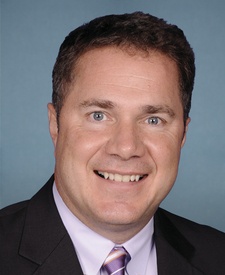Voting in the dark: Senate hides $57 million in campaign contributions behind thicket of dead trees

In a year when billions of dollars are being spent to determine control of Congress, Americans might be interested in knowing — before they head to the polls next week — which candidates are racking up the biggest IOUs to special interests. But if voters in the 36 states where U.S. Senate seats are on the ballot want to know who has been underwriting the campaigns, they may be out of luck.
A Sunlight Foundation analysis of data available — and not available — at the Federal Election Commission suggests the Senate has created a whole new category of shadow money: More than $57 million in contributions to the nation’s most competitive Senate races that have been reported to the FEC but are inaccessible for analysis because they have been filed on paper.
How much paper? In the 11 Senate contests that the nonpartisan Rothenberg Political Report sees as in doubt, candidates dumped 80,335 pages of campaign finance reports on the Oct. 15 filing deadline. It wasn’t until this morning, nearly two weeks after the filing deadline, that the FEC managed to post images of the last of those files. Yet to be made available to the public: most Senate candidates’ pre-election reports, covering contributions made between Oct. 1 and Oct. 15. They were due last week.
Shadow money: Third quarter campaign finance reports from key Senate races
The 23 Senate candidates whose filings Sunlight found online reported collecting a combined $57.4 million between July 1 and Sept. 30. Analyzing those contributions is near impossible: What the FEC has been able to post is scanned images — essentially pictures of pieces of paper. Extracting all of the names and numbers and putting them into a spreadsheet that enables electronic search and analysis — the sort of filtering that allows journalists to quickly answer such questions as who are a candidate’s biggest donors and what percentage of a candidates’ money comes from out of state — may take until the end of the year, says FEC Commissioner Ann Ravel.
“It’s terrible,” she said.
The delay in making Senate campaign finance disclosures available comes despite heroic efforts by the staff of the chronically underfunded FEC, who are working around the clock to dig through the mountains of paper. “People are working overtime,” Ravel said. “They are working all night.”
In sharp contrast, reports for House candidates and every other political committee active in federal races were available for public viewing and, because they were filed electronically, analysis, the moment they were filed at the FEC on Oct. 15. As a result, anyone who’s interested can download a spreadsheet with all of the contributions to Republican Michael Coffman and Democrat Andrew Romanoff, candidates in a competitive Colorado House race. But voters in the same state will have to wait until long after Election Day to obtain the same information for Sen. Mark Udall, D-Colo., and his Republican opponent Cory Gardner.
In an era when every Senate campaign has a website — not to mention Twitter and Facebook accounts — to communicate with voters, as well as sophisticated data mining operations to identify supporters and turn them out on Election Day, the candidates continue to rely on dead trees and the U.S. Postal Service to publish their campaign finance reports.
As Secretary of the Senate Nancy Erickson described it in 2012 testimony to the Senate Rules Committee, most Senate campaign filers produce their reports in an electronic format, “only to then print the pages for delivery to the Office of Public Records,” an arm of Erickson’s office. The Senate Office of Public Records then scans the sheets of paper to put them back in an electronic format for delivery to the FEC, where it becomes available for viewing as pictures of sheets of paper. Months later, an army of data-enterers converts them back into a searchable digital format. Why would Senate candidates — most of whom campaign to save taxpayer dollars — want to put their own staff and the FEC through this expensive and time-consuming process that a click of a mouse could pre-empt? If it doesn’t sound like a deliberate attempt to delay the release of campaign finance data to you, there may be a bridge in Brooklyn you’d be interested in purchasing.
Sunlight has decried and proposed legislative solutions to the Senate’s Luddite tendencies when it comes to campaign finance disclosure. But with an election looming it might be more time-efficient to issue a reporting challenge.
Since we are pretty sure that most Senate candidates aren’t producing their campaign finance reports on parchment and quill pens, we suggest that political reporters and editorial boards in the states that are holding elections for the U.S. Senate this year ask the candidates to turn over electronic copies of their third-quarter filings, along with the pre-election report that covers the first two weeks of October.
If they don’t comply, insist on an explanation for why they don’t want the voters to have data they can use to make informed decisions. If they candidates do provide the digital data, let us know! We’d be happy to give a shout-out to anyone who is proactive in the cause of transparency.

